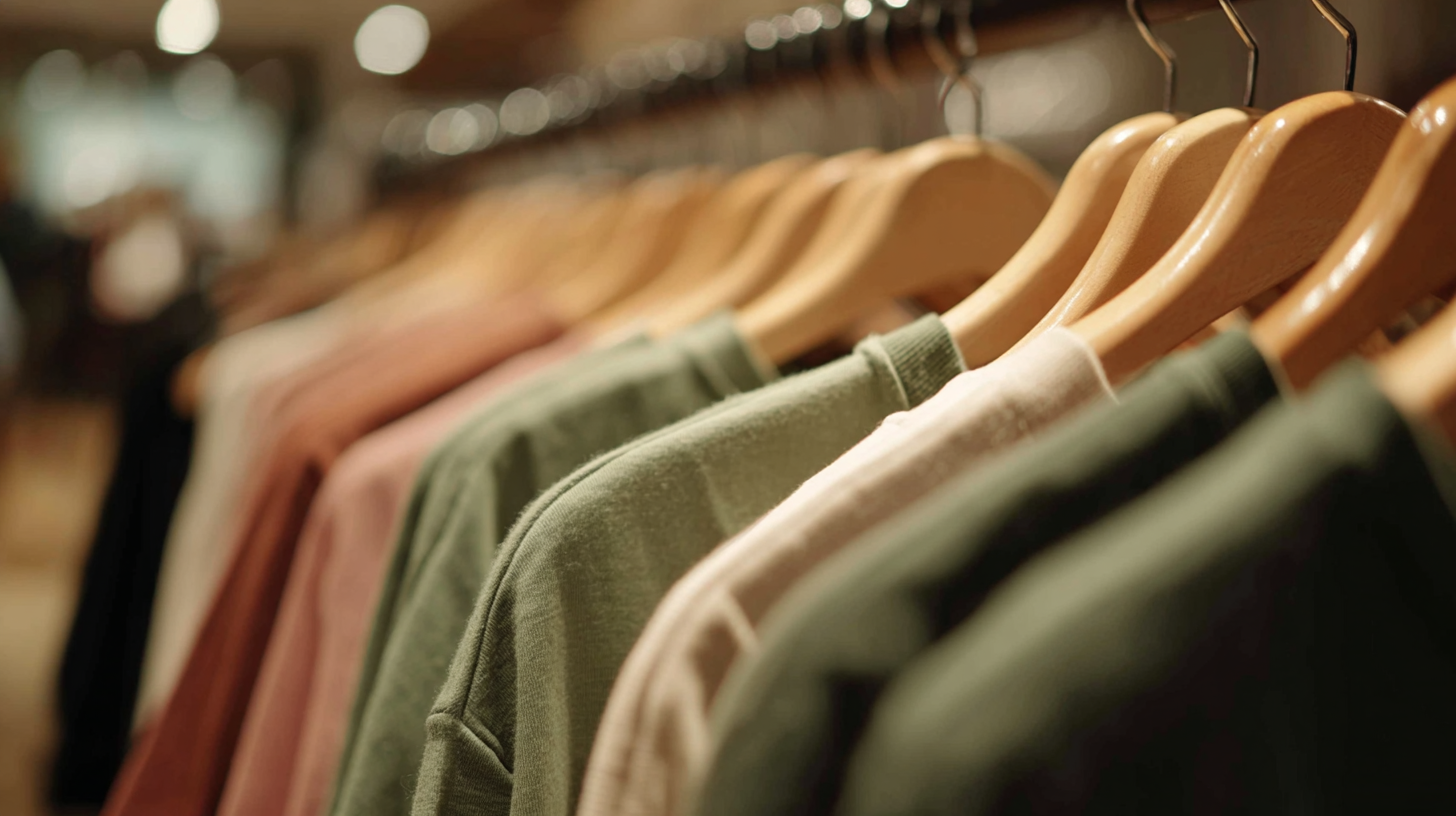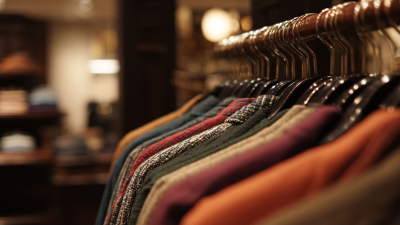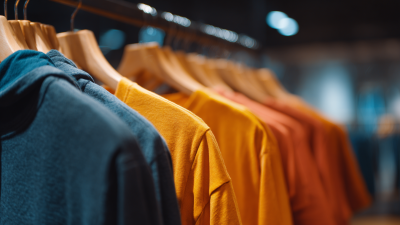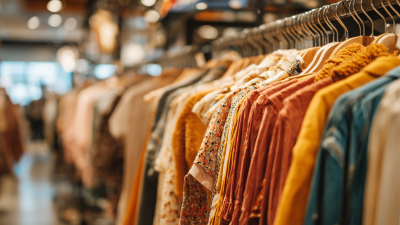Exploring Sustainable Fashion: The Rise of Eco-Friendly Clothing Stores
As the global fashion industry grapples with the environmental crisis, sustainable fashion is transitioning from a niche market to a mainstream phenomenon. A recent report by Allied Market Research highlights that the sustainable fashion market is projected to reach $8.25 billion by 2023, growing significantly due to heightened consumer awareness and demand for eco-friendly products. In response, clothing stores are increasingly prioritizing sustainability in their offerings, with many adopting eco-friendly materials and transparent supply chains. This shift not only caters to environmentally conscious consumers but also presents opportunities for retailers to differentiate themselves in a competitive landscape. As the momentum behind sustainable practices continues to grow, exploring innovative strategies to implement eco-friendly initiatives in clothing stores is more relevant than ever, enabling businesses to thrive while supporting the health of our planet.

The Concept of Sustainable Fashion and Its Importance
Sustainable fashion is rapidly gaining traction as consumers become increasingly aware of their environmental impact. The concept revolves around creating clothing in a manner that is ecologically sound, ensuring that the entire lifecycle of the product, from production to disposal, minimizes harm to the planet. According to a report by the Global Fashion Agenda, the fashion industry is responsible for about 10% of global carbon emissions and a staggering 20% of wastewater, highlighting the urgent need for a shift toward more sustainable practices.
Eco-friendly clothing stores have emerged as critical players in this transformative movement, often offering garments made from organic or recycled materials and utilizing production methods that are gentle on the environment. A survey by McKinsey & Company found that around 60% of consumers are willing to change their shopping habits to reduce environmental impact, indicating a growing market for sustainably produced apparel. As such, these stores not only cater to a conscious consumer base but also play a pivotal role in advocating for an industry that prioritizes sustainability, ethics, and the well-being of our planet.
Exploring Sustainable Fashion: The Rise of Eco-Friendly Clothing Stores
This chart illustrates the significant growth in consumer interest towards sustainable fashion from 2018 to 2023, highlighting the percentage of consumers who prefer eco-friendly clothing options.
The Growth of Eco-Friendly Clothing Stores in the Market
The market for eco-friendly clothing stores has witnessed significant growth in recent years, driven by increasing consumer awareness and demand for sustainable products. According to a report by Grand View Research, the global sustainable fashion market is expected to reach $8.25 billion by 2023, highlighting a substantial shift in purchasing behaviors towards more environmentally conscious options. This rise is not just a trend; it reflects a profound change in how consumers view their clothing choices and the impact on the planet.
As eco-friendly brands proliferate, shoppers are increasingly prioritizing brands that utilize sustainable materials and practices. Statistics from Nielsen indicate that 66% of consumers are willing to pay more for sustainable brands, particularly among younger demographics. This consumer shift has prompted traditional retailers to re-evaluate their supply chains and introduce eco-conscious lines.
Tips: One effective way to embrace sustainable fashion is to seek out local eco-friendly stores. Not only does shopping locally support small businesses, but it also reduces carbon footprints associated with transportation. Additionally, consider investing in timeless, high-quality pieces that will last longer, rather than fast fashion items that contribute to waste. Remember, every small change in your purchasing decisions can make a difference!

Key Features that Define Eco-Friendly Fashion Brands
Sustainable fashion has gained significant traction in recent years, with eco-friendly clothing stores emerging as leaders in promoting environmental responsibility. One of the defining features of these brands is their use of sustainable materials. Many eco-friendly fashion labels prioritize organic cotton, hemp, and recycled fabrics, minimizing the environmental impact of production. By selecting these materials, they not only reduce waste but also ensure that their products are free from harmful chemicals.
Another critical aspect of eco-friendly fashion brands is their commitment to ethical labor practices. These companies often ensure fair wages and safe working conditions for their employees, fostering a sense of community and responsibility. Transparency in the supply chain is paramount, allowing consumers to make informed choices about the impact of their purchases. Moreover, many brands are increasingly focused on reducing their carbon footprint through local production and energy-efficient processes, further solidifying their dedication to sustainability. This holistic approach to fashion not only appeals to environmentally conscious consumers but also encourages a significant shift in the industry towards more responsible practices.
Consumer Awareness and Its Impact on Sustainable Fashion Choices
Recent studies highlight the evolving landscape of consumer perceptions regarding sustainable and ethical fashion, especially in the wake of the COVID-19 pandemic. Consumers are increasingly aware of the environmental impact of the fashion industry, which has been recognized as a major contributor to pollution, water consumption, and carbon emissions. This heightened awareness has led to a shift in consumer behavior, motivating individuals to seek out brands that align with their values of sustainability and ethical practices. The recent analysis using big data underscores that as consumers become more informed, their preferences lean towards eco-friendly alternatives, reflecting a broader societal movement towards sustainability.
Furthermore, reports indicate a persistent gap between consumers' intentions and actual purchasing behaviors when it comes to sustainable fashion. Although many express a desire to support eco-friendly brands, logistical factors such as affordability and accessibility continue to pose challenges. The rise of circular and sustainable fashion trends demonstrates that the industry is actively responding to these consumer demands, promoting innovative practices that prioritize environmental consciousness. As younger generations, particularly Gen Y and Z, become more influential in the market, the push for sustainable fashion is expected to intensify, creating new opportunities for brands committed to eco-efficiency and ethical standards.
Challenges and Future Trends in Eco-Friendly Clothing Retail
The rise of eco-friendly clothing stores is transforming the fashion industry as it grapples with several pressing challenges. By 2026, sustainability will be at the forefront, but businesses must navigate obstacles such as supply chain efficiency, consumer demand for transparency, and the financial implications of adopting greener practices. Fast fashion's impact continues to haunt the industry, making it imperative for retailers to not only shift towards sustainable products but also consider their entire supply chain.
Tips: When seeking eco-friendly clothing, look for brands that prioritize transparency and ethical sourcing. Pay attention to certifications like organic or Fair Trade, which indicate compliance with sustainability standards. Additionally, consider investing in timeless pieces rather than transient trends, as this reduces waste and promotes a more sustainable wardrobe.
As the fashion industry evolves towards sustainability, technological advancements play a crucial role. Retailers are beginning to implement digital tools to enhance efficiency and address environmental concerns. However, to thrive in this ever-changing landscape, businesses must leverage industry research to identify and seize eco-friendly opportunities, turning challenges into growth prospects that align with consumer values.

Related Posts
-

How to Select the Best Clothing Shop for Your Global Sourcing Needs
-

Unlocking Sustainable Fashion Tips for Shopping at Your Favorite Clothing Shop
-

The Future of Clothing Websites in the Era of Digital Transformation
-

Challenges Faced by Clothing Stores in Adapting to Consumer Trends
-

How to Build an Engaging Clothing Website That Attracts Customers
-

Exploring the Evolution of Sustainable Fashion: A Guide for Online Clothing Shop Enthusiasts

